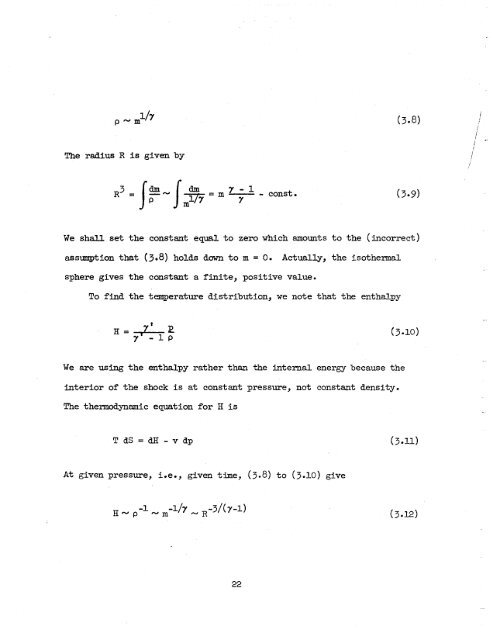Theory of the Fireball
Theory of the Fireball
Theory of the Fireball
You also want an ePaper? Increase the reach of your titles
YUMPU automatically turns print PDFs into web optimized ePapers that Google loves.
The radius R is given<br />
R3 = I"-<br />
P<br />
P<br />
J ;+ = m -<br />
Y - 1 - const.<br />
7<br />
(3.9)<br />
We shall set <strong>the</strong> constant equal to zero which amounts to <strong>the</strong> (incorrect)<br />
assmption that ( 3.8) holds dam to m = 0. Actually, <strong>the</strong> isot'nermal<br />
sphere gives <strong>the</strong> constant a finite, positive value.<br />
To find <strong>the</strong> temperature distribution, we note that <strong>the</strong> enthalpy<br />
H = 7' E<br />
Y 1 - l P<br />
We are using <strong>the</strong> enthalpy ra<strong>the</strong>r than <strong>the</strong> internal energy because <strong>the</strong><br />
interior <strong>of</strong> <strong>the</strong> shock is at constant pressure, not constant density.<br />
The <strong>the</strong>rmodynamic eqmtion for H is<br />
TdS=dH-~dp<br />
At given pressure, i.e., given time, (3.8) to (3.10) give<br />
22
















